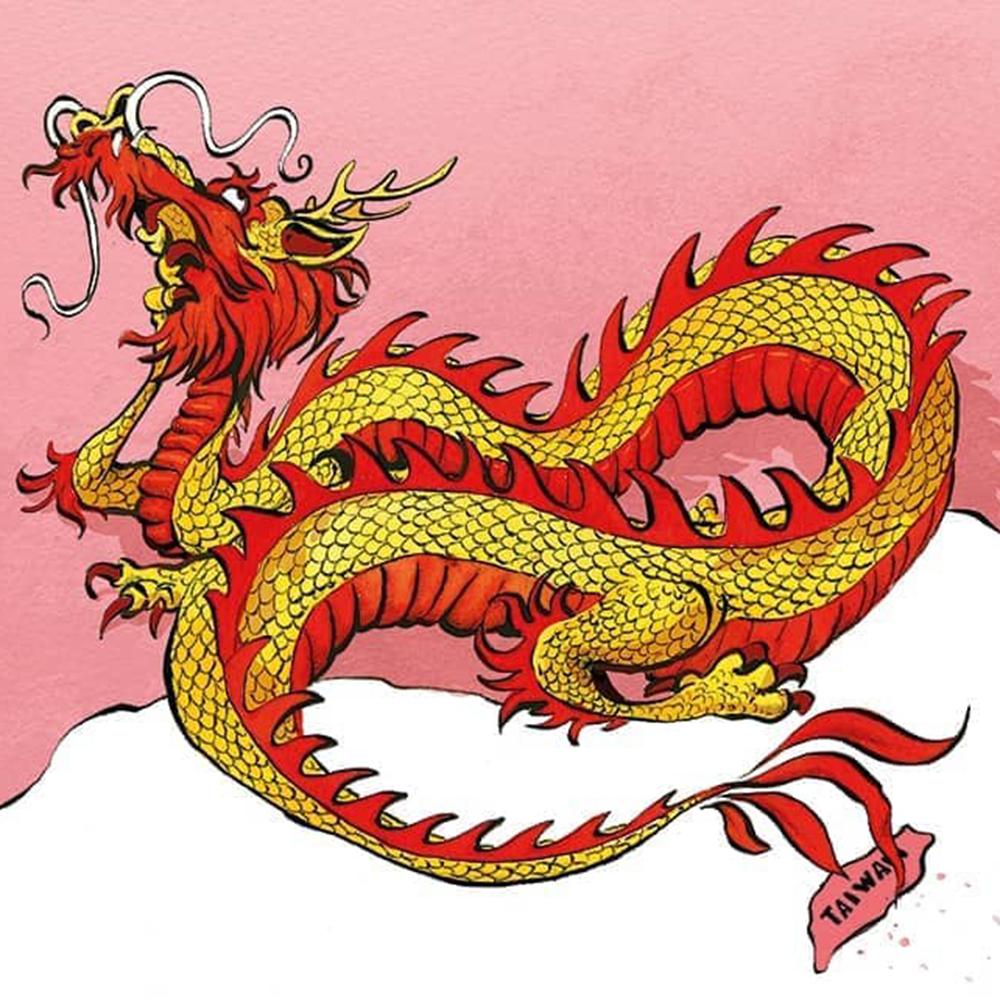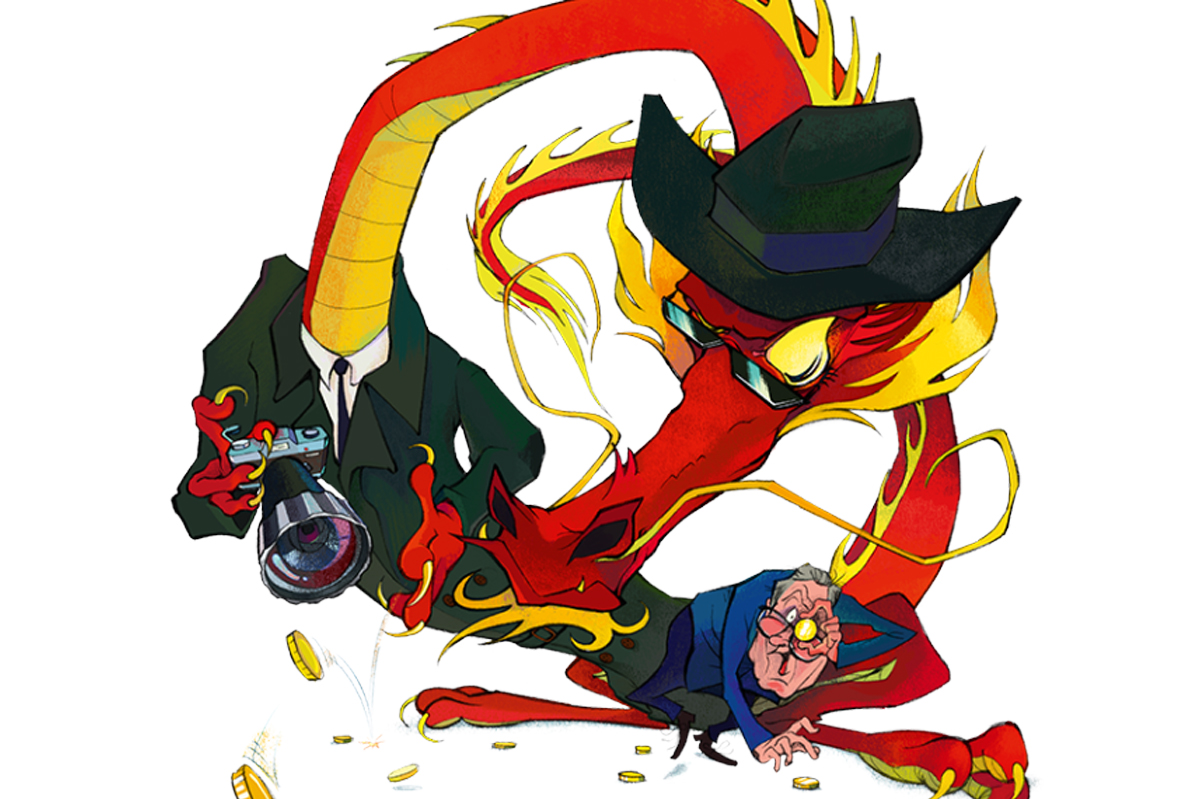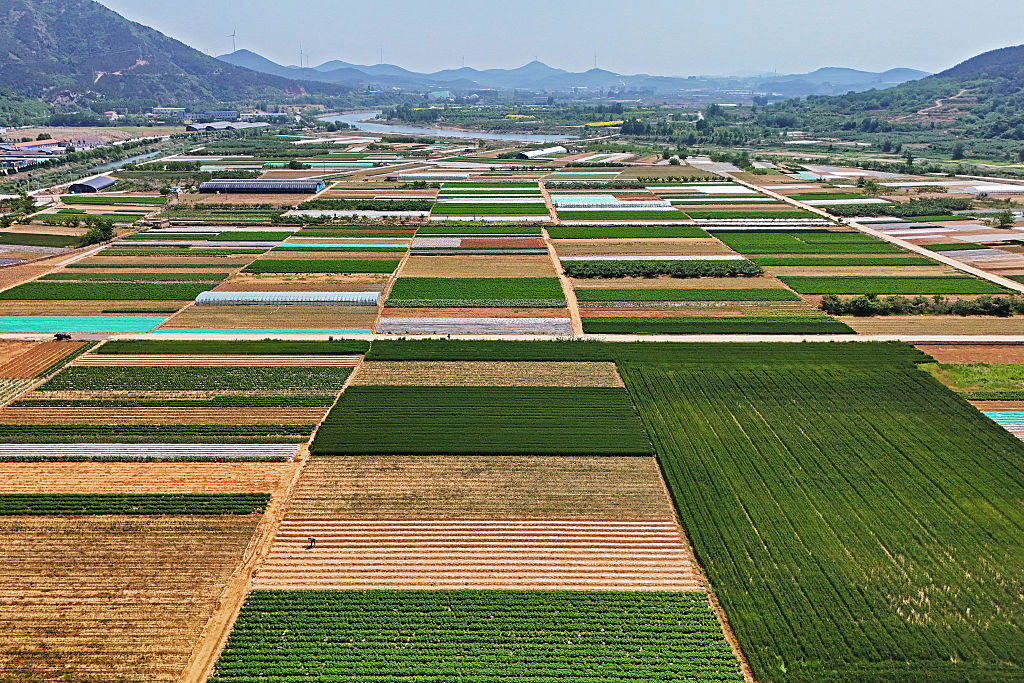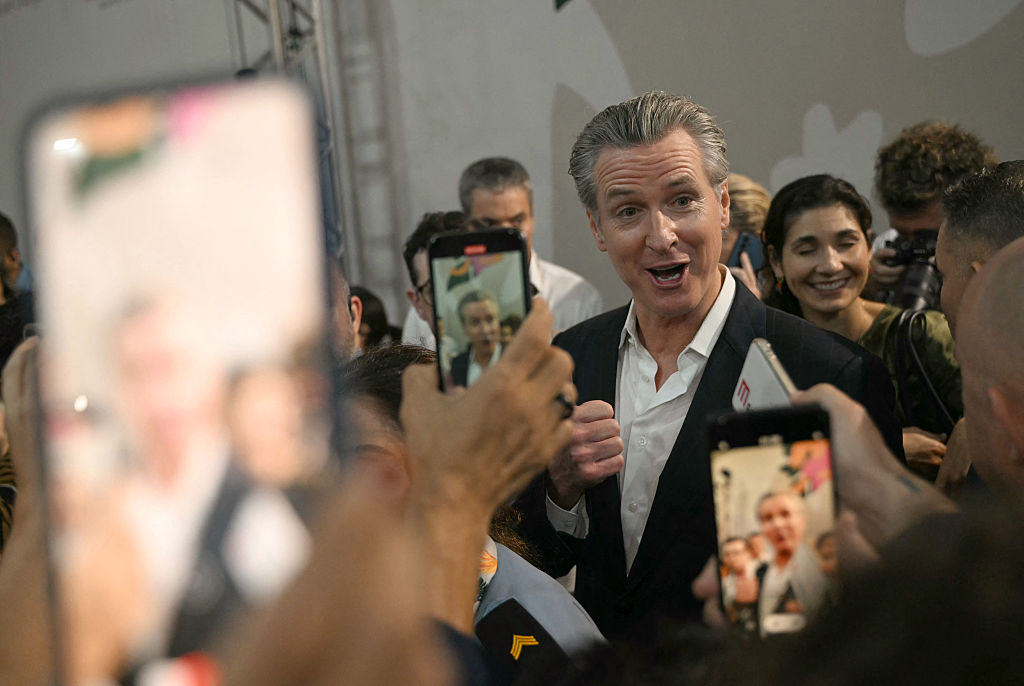The world received a jolt in 2018 – and it wasn’t from a Silicon Valley whiz or a lab at MIT. It came from Shenzhen, China, where a lanky, unassuming biochemist named He Jiankui did the unthinkable. Using the newly discovered CRISPR-Cas9 toolkit, and asking no one’s permission, He edited the genes of Lulu and Nana, twin baby girls, so that both were born immune to HIV.
The scientific establishment gasped, jaws dropped and the moralists clutched their pearls. “Monstrous!” the bioethicists cried. “I was just horrified,” said Jennifer Doudna, who won the 2020 Nobel Prize in Chemistry for inventing the CRISPR gene-editing technique. The Chinese government, also caught flat-footed, threw He in prison for three years, fining him the equivalent of $429,000 for “illegal medical practices.”
The West, bloated on its own hype, now faces a leaner competitor, one that is stocked with talent
But He’s gamble, reckless as it was, illuminated the way. Call it science with Chinese characteristics. The twins, healthy by his account, are living proof that China is willing to go where others won’t. His bold stroke was, in retrospect, a turning point, a spark from a nation ready to push the boundaries of science and technology. Now, seven years later, we can see it more clearly for what it was: China’s announcement to the world that it is the imitation nation no more.
For decades, the West has painted China as the knock-off kingdom, a land of pirated smartphones, cheap labor, gimcrack trinkets and stolen formulas for drugs. According to the consensus, China was destined to be a mere follower in science and tech, not a leader, content to mimic and steal while the West spent a fortune doing the hard job of innovating. But while the critics were doubting, China was plotting – and now the Middle Kingdom is on a tear.
China, once a punchline when it came to science, is now a research powerhouse. The West had better wake up, because this isn’t a race to catch up, it’s one to keep up – and the stakes have never been higher.
While the He saga unfolded, China’s scientific machine was roaring to life. The country is now in a full-tilt R&D sprint. A recent report by the Australian Strategic Policy Institute reveals the magnitude of the shift, establishing that China now dominates global research in 57 of 64 key technological fields such as defense, biotech and robotics, a dazzling leap from the early 2000s when it held the lead in three. Meanwhile, the US has dropped from being pioneers in 60 areas to just seven.
Gone, too, is the West’s sole dominance on the frontiers of basic science. In 2020, China overtook the US in terms of its share of the top 1 percent of the most highly cited research, an approximate measure for cutting-edge work. Over the past four years, it has also published more papers than either the US or the EU in the most prestigious scientific journals, a blowout lead numbering in the thousands when it comes to fields such as chemistry and physics. Skeptics warn that Chinese scientists like to game the statistics, such as by going over the top in citing their fellow comrades to push their numbers up. But even controlling for that bias, China’s pace and direction continue to impress.
The future of biotech may come to resemble the present in manufacturing where big companies offshore work
And the surprises keep coming. In January, DeepSeek, a Chinese AI startup born from the ashes of a quantitative hedge fund, unleashed R1 – a reasoning model so austere in its efficiency, so cunning in its cost-cutting simplicity, that it shattered the illusion of Silicon Valley’s invincibility in AI research. The R1 model, trained for the mere pittance of $6 million on weak hardware and then offered for free to all as open-source software, claimed parity with OpenAI’s o1 model in performance and made the billions others had spent on Nvidia chips and data centers look like decadent feasts.
Nvidia’s stock plummeted 17 percent on the news. The NASDAQ bled $1 trillion in a single day, as if the market itself had recoiled in existential dread. Prominent voices across the industry reacted with a mix of awe, denial and veiled panic – what Gen Z calls “cope.” Silicon Valley tycoon Marc Andreessen went full Cold War, declaring on social media that “Deepseek R1 is AI’s Sputnik moment.”
Sure, the markets recovered in time, doubts spread about DeepSeek’s cost claims, and R1 couldn’t help but express its strong communist leanings, like an Ivy League English major. Nevertheless, what couldn’t be denied was China’s ability to release a near-frontier model despite extensive export restrictions on computer chips.
What’s more, China has begun to show it’s more competitive on other layers in the AI stack, especially on hardware and talent. Huawei has made impressive strides in AI silicon development, recently introducing its own rack-scale AI architecture, the CloudMatrix 384, which competes with Nvidia’s main offerings. Jensen Huang, chief executive of Nvidia, recently speculated that “50 percent of the world’s AI researchers are Chinese.” The West, bloated on its own hype, now faces a leaner competitor, one that thrives in scarcity and is stocked with talent.
Next, Chinese supremacy in the manufacturing of drones is undisputed. DJI, the pride of China’s drone industry, owns 70 percent of the global market share. I have met engineers in American drone startups who shrug, half in frustration and half in amazement, at their inability to reverse-engineer the motors on DJI’s quadcopters.
Their performance is striking. In Shenzhen last October, 10,197 drones rose high into the city sky, all guided by a single computer. The spectacle set a world record for synchronized drone shows. The drones, with their blinking lights, wove luminous tapestries – dragons, lotus flowers and Chinese Communist party slogans. You can watch the show on YouTube, in awe, but also with a creeping unease as these machines dance in a swarm with a level of perfection that no human could rival.
Perhaps most frightening of all in this respect is to contemplate the algorithms of slaughter. In the desolate theaters of war on Ukraine’s battlefields, Chinese-made drones hum and menace and kill. By some accounts, they are responsible for 70 percent of the fatalities – overtaking clumsy old human-fired bullets and shells.
The half-born future of war belongs to these cold machines, which have rendered even tanks obsolete, bringing us back to the trench warfare of World War One. China’s ability to scale production of these cheap and lethal machines dwarfs anything companies in the West could hope to manufacture. The same software that choreographed Shenzhen’s 10,000-drone waltz could, tomorrow, direct a swarm to darken the skies over Taipei. But perhaps China’s strongest weapon of all may be something even simpler: dependency. Supply-chain dependence on China for drones, as well as a lack of defense systems to use against them, may well be the most critical security vulnerability in the West.
Lastly, we come to biotech, where China poses its most immediate threat to the West’s claim on pole position. Big-picture numbers tell the story of its aggressive, swift climb to within sight of the summit. In 2023, China accounted for 28 percent of all global clinical trial initiations, second only to the US, up from just 4 percent in 2012 when it was in last place. This year, Chinese biopharma firms have claimed 33 percent of all global licensing deals. And, incredibly, China now originates more novel therapeutics than Europe. Nearly a third of major pharmaceutical licensing agreements – massive contracts exceeding $50 million upfront – now involve Chinese companies. Five years ago, they had none. This is not a trend; it is a tectonic shift.
China’s biotech machine is not a mystery. It’s not a story of theft or espionage, though the West loves its scapegoats. The truth is simpler. China excels where the West falters: speed, scale and pragmatism. Its biotech ecosystem, fueled by state subsidies and a cultural indifference to western moralizing, is simply better adapted to moving quickly.
While American scientists debate diversity quotas or wait in line at the FDA, Chinese labs run experiments, at scale, quickly and cheaply. With a population of 1.4 billion to draw from for experiments, Chinese trials recruit faster, run cheaper and deliver data while western researchers are still stuck drafting protocols.
The country’s scientists also know how to cut red tape. The IND process, the first step in the regulatory pathway, was once a Sisyphean ordeal stretching over a year. In 2018, the Chinese equivalent of the FDA unveiled its “implied license” system for clinical trials: submit an IND and, if the regulators raise no objections within 60 days, the path is clear. The reforms carved a new fast lane – where once companies were suffocated for hundreds of days in bureaucratic limbo, now a mere few months suffices to birth a new trial.
The western pursuit of scientific knowledge has become too safe and dominated by ideological committee
At this pace, it is only a matter of years before China outproduces the US in drug development. The losers won’t be the big western pharma companies, who are happy to pay for cheaper discoveries out of China. They are likely to be the startup biotechs in San Diego and Boston, now choked by the bewildering labyrinth of the FDA and the astronomical costs of clinical trials. They must try to produce bespoke molecules at a price that no longer makes sense, as venture capital flees a sector where returns are devoured by Chinese efficiency. The future of biotech may come to resemble the present in manufacturing, where big companies offshore work and import the results to the West. First it was cars, now it is drugs.
So where’s this all headed? A global scientific shake-up, for one. China’s not just a player; it’s a partner, a rival, a trailblazer in its own right. The West would do well to steal a page from the old Chinese copycat system and adopt a few of these efficiencies.
Still, libertarians are right to worry that authoritarian models have their structural limits. The energy unleashed by torrents of government funding will plateau once political players learn to game the system and Chinese scientists, like their western counterparts, become bureaucrats begging for handouts. All it will take is the arrest and re-education of a prominent scientist to chill the air. Scientific progress thrives on decentralized competition, open inquiry and individual initiative – conditions surely stifled in China but also, sadly, now in the West.
The western pursuit of scientific knowledge has become, over the years, too safe, too incremental and dominated by ideological committees who are blind to the wild, speculative leaps necessary to advance the frontier. Progress can no longer be assumed. It must be fought for.
He Jiankui, our gene-editing outlaw, was released in 2022 and is now back in Beijing running a lab in which he chases cures for Alzheimer’s and muscular dystrophy, all while posting on social media like a cartoonish sci-fi villain who knows he’s got the upper hand. “Ethics is holding back scientific innovation and progress,” He sneered on March 11, alongside a selfie beside a centrifuge. Five days earlier he posted: “Human will no longer be controlled by Darwin’s evolution.” These are but a small sample of He’s – admittedly funny – provocations.
Then, on May 18, in a surprise twist, he threatened to leave China because the government would not admit his new wife Cathy Tie into the country. Tie, who lives in Texas, is herself a rising star on the biotech scene.
With his unhinged rants on X, his CRISPR-modified babies, his Alzheimer’s dreams, his defiance, perhaps we are seeing the true face of Chinese science in a microcosm, bold, brash and unafraid. America should always honor love, and it should care even more about talent in this race. We should provide a home for He and Tie.
This article was originally published in The Spectator’s July 2025 World edition.























Leave a Reply